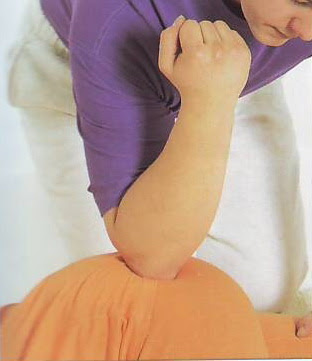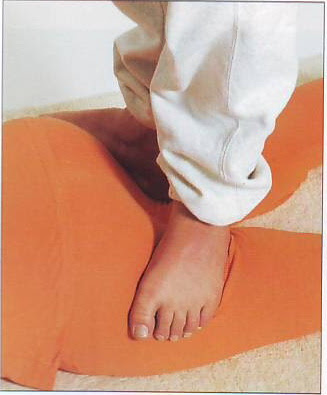The
Mechanics of Thai Massage
To
create the fundamental effect of pressure that is needed for Thai bodywork,
force is applied by the masseur ‘Soft tissue massage’ and ‘manipulation’
describes the two aspects of Thai bodywork. In soft tissue massage, pressure is
used directly for the desired effect. For the manipulative techniques, pressure
is used to achieve stretching and twisting. Traditional Thai bodywork massage
is remarkable for the number of different positions in which the receiver’s
body is presented to the masseur, who also has to adopt a corresponding variety
of body positions.
Many of the manipulations in Thai bodywork involve
substantial leverage. This often works to the advantage of the practitioner by
enabling a small effort to achieve a large effect. This will also benefit the
receiver provided that care is taken to avoid overstretching which could occur
if manipulations were performed hastily.
Soft
Tissue Pressure Techniques
Pressing is the basis of all soft tissue
massage techniques. Skilful application of pressure can affect different levels
within the tissues and enhances the flow of energy. The application of a force
through a larger body surface, such as the palm or the sole of the foot,
creates a pressure which is spread out and does not penetrate too deeply. If the
same force is applied with the thumb or the tip of the elbow to cover a smaller
area, a much more focused and penetrating pressure results. For all pressure
techniques, always start with light pressing and increase gradually. Some people
find very deep pressure extremely painful. In
the single thumb pressing method, pressure is always applied using the pad of
the thumb. The tip of the thumb is never used. Thai bodywork is unique in
frequently combining thumb pressing while stretching a body part at the same
time. Pressing affects the underlying tissues in a way that makes them more
amenable to the flow of energy and the drainage of lymph.
In
the single thumb pressing method, pressure is always applied using the pad of
the thumb. The tip of the thumb is never used. Thai bodywork is unique in
frequently combining thumb pressing while stretching a body part at the same
time. Pressing affects the underlying tissues in a way that makes them more
amenable to the flow of energy and the drainage of lymph.

 This method is used to stimulate the energy channels. Movement can be in either direction along the lines. The thumbs are placed with their tips almost touching and pressed alternately as they progress along the energy lines. If movement is towards the left, the left thumb is lifted and moved two to three centimeters to the left and pressure is applied. The right thumb is then moved up to join the left and pressed in turn.
This method is used to stimulate the energy channels. Movement can be in either direction along the lines. The thumbs are placed with their tips almost touching and pressed alternately as they progress along the energy lines. If movement is towards the left, the left thumb is lifted and moved two to three centimeters to the left and pressure is applied. The right thumb is then moved up to join the left and pressed in turn.
This sequence is repeated over and over again so that alternate thumb pressure is applied along the whole length of the energy lines. The ‘walking’ can, of course, be done from left to right.
The palmar surface of the
hand is extensively used for applying strong pressure over larger areas of the
body than would be possible with the thumbs. Pressure can be applied and
sustained without movement either for a few seconds or up to several minutes.
Palmar pressing can be used to create a rocking action and this is achieved
with short duration presses. The upper body weight over the arms is used to
generate strong and sustained pressure. To achieve the effect required without
fatigue, the arms are usually kept straight. There are three different ways of
pressing with the palmar surface – Single Palm Pressing, Double Palm Pressing
and Butterfly Palm Pressing as follows:
Single Palm Pressing:
The emphasis is often on the heel of the hand and this technique is used for
applying firm pressure to the major soft tissue masses of the body, such as the
back, buttocks and thighs.
Double Palm Pressing: Here,
concentrating the pressure is achieved by placing one hand directly on top of
the other.
Butterfly
Palm Pressing: This method involves simultaneous pressure
using both hands with the heels of the palms touching. It spreads the force
over an even wider area of the body.

Elbow pressing with the tip
of the elbow enable the masseur to apply deeper pressure than is possible with
the hand. It is used on the thighs, buttocks and upper shoulders, where the
muscles are thick. If the elbow tip causes too much pain, the upper forearm can
be used instead to spread the force and to reduce pressure.
Knee pressing frees the
hands for controlling stretches while, at the same time, exerting deep
pressure. It is used mainly on the backs of the legs and buttocks.
The foot is ideally shaped
to apply pressure over large areas of the body. On strongly curved parts, such
as thighs, the arch is used but for thickly muscled buttocks and similar
muscular areas, the heel or the front of the sole can create strong, penetrating
pressure.
Some manipulations require that parts of the body are pulled
against the foot to give a powerful stretch against foot pressure.
Controlled sitting, where
more or less of the weight is taken on the practitioner’s feet or knees, is
sometimes applied. This is particularly useful as a means of anchoring one part
of the body during a manipulation.

Foot pressure from a
standing position can be extremely penetrating and should be applied with great
care. It is used on the back, buttocks, legs and feet.












